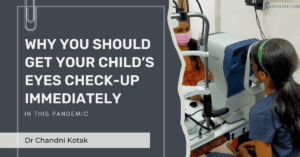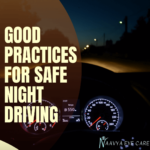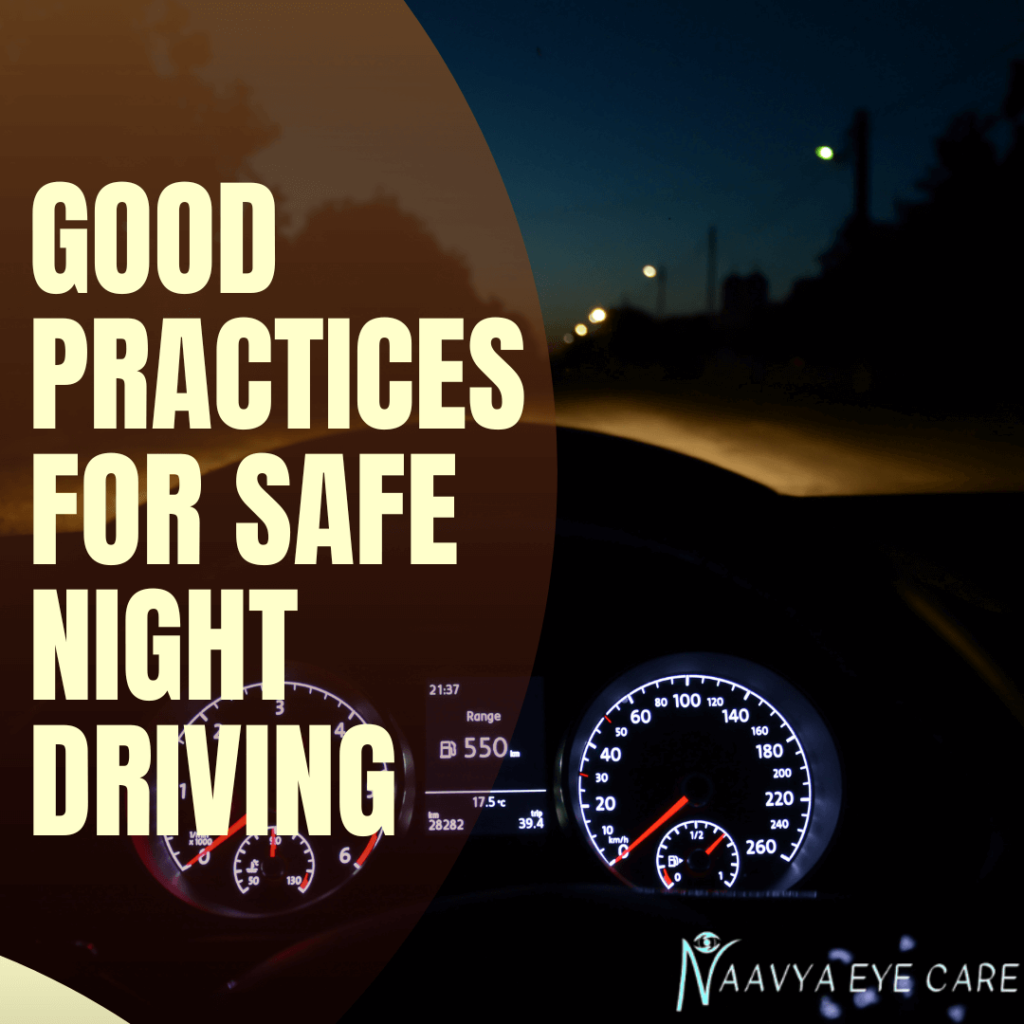
Why is it more important
The days are shorter in winter, so we inevitably end up driving at night a little more.
Any of us who don’t have perfect eyesight can find this a stressful adjustment to make each year, and it can be a dangerous one if we’re not taking the dangers of night driving into careful consideration.
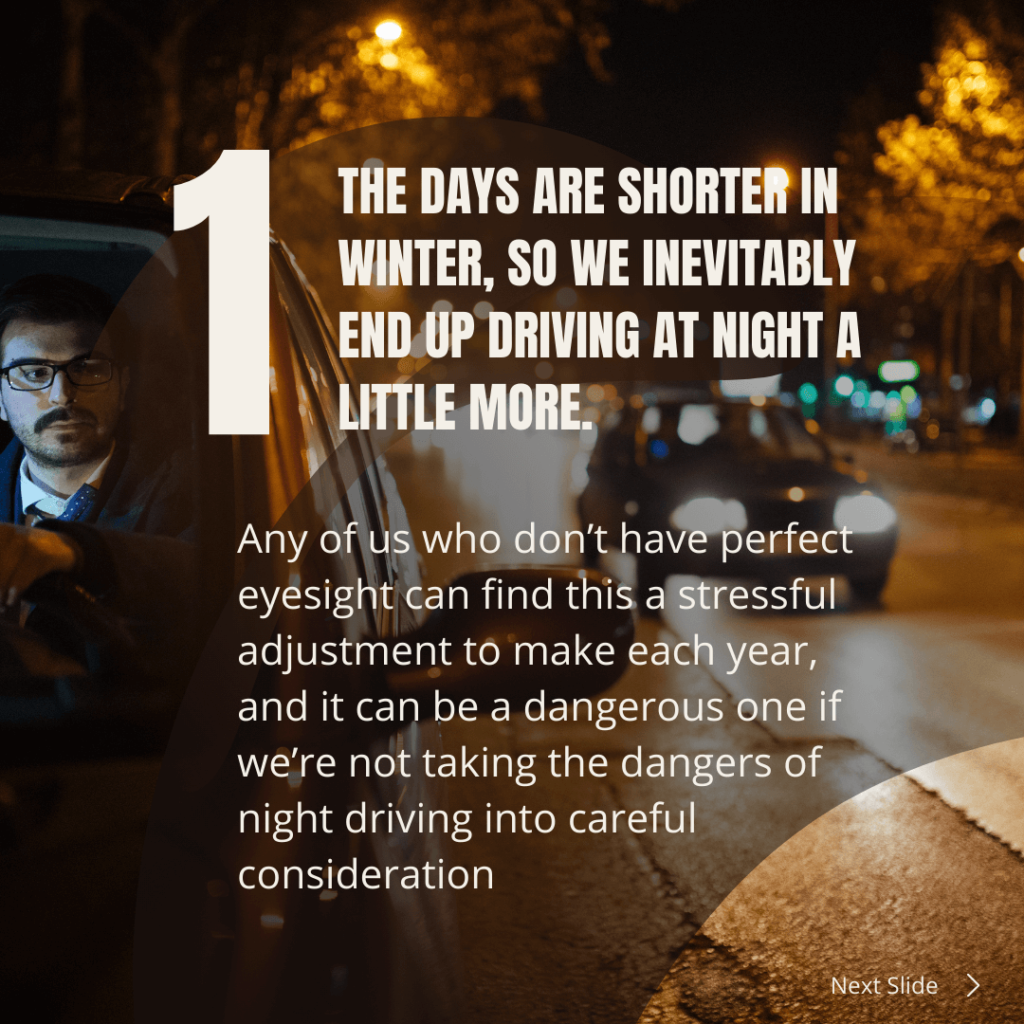
What Causes Night Driving Problems
Lights at night time come from all directions – headlights, traffic lights, street lamps, and they can cause a reflection and glare on your glasses. This will disturb your eyes, creating discomfort and lowering your ability to see in focus. You will find it more difficult to spot hazards such as junctions or bends and to see more vulnerable road users such as pedestrians, cyclists and motorcyclists.Additionally, as we grow older, our eyes take longer to react to changes in light and we can have difficulty with colours and contrasts in low light. According to the Royal Society for the Prevention of Accidents between the ages of 15 and 65, the time it takes to recover from glare increases from 1 to 9 seconds.Also As we get older, our night vision tends to worsen. The reason for this is that we gradually lose some of the rods in our eyes (the specialized light-detecting cells that distinguish between light and dark). Along with other age-related eye problems, the lenses in our eyes also grow stiffer and cloudier over the decades, making it harder to focus while increasing our sensitivity to glare. The end result is greater difficulties with driving at night.
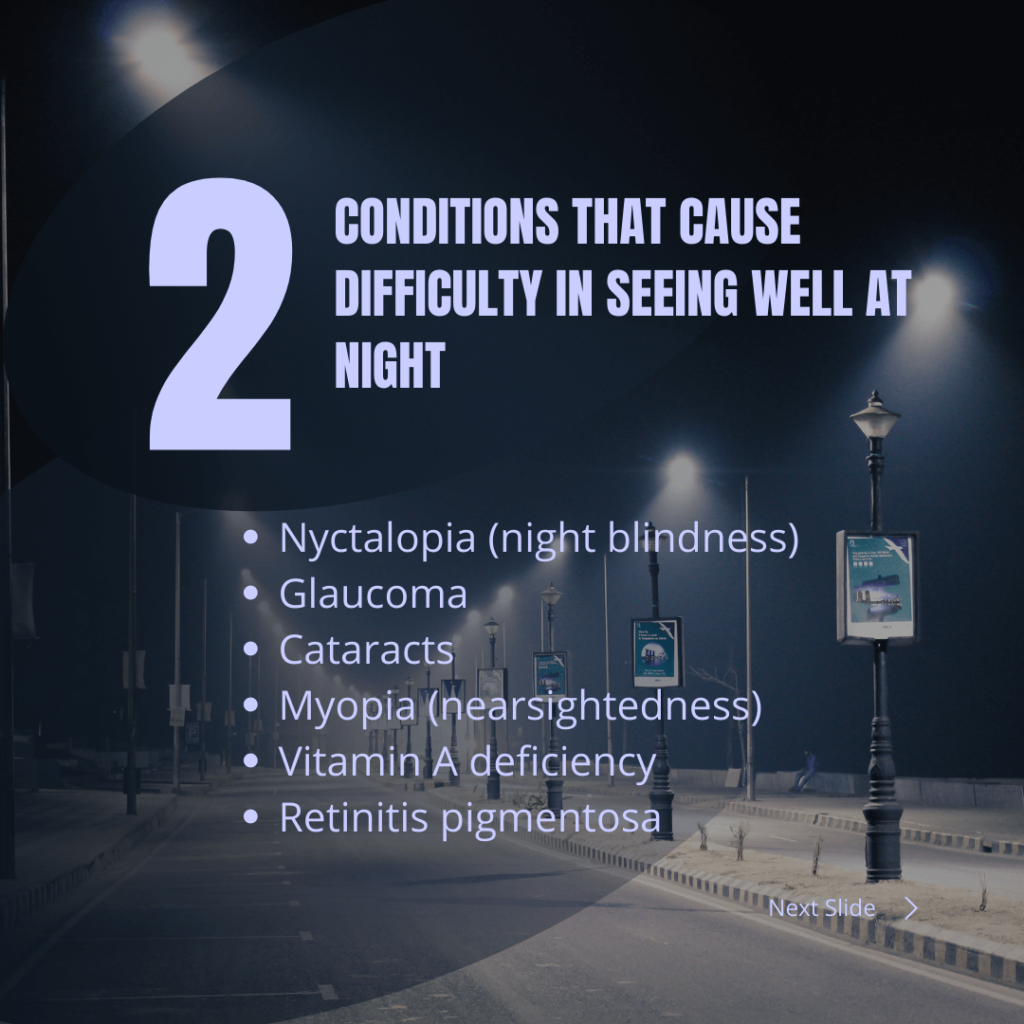
Conditions That Cause Difficulty in Seeing Well at Night
Below are some of the conditions that can affect your vision and your driving at night:
- Nyctalopia – Also called night blindness, this condition does not necessarily mean that you are totally blind at night. But it may give you a harder time seeing when there is low light.
- Glaucoma – This condition reduces peripheral vision, so it can also make it harder for you to see at night. It occurs when there is fluid buildup in the eye that causes damage to the optic nerve. This is also known as silent thief of sight.
Cataracts – These cause the lens of your eye to be cloudy. The condition can make it harder to see both during the day and night. - Myopia – Also known as nearsightedness, this condition makes it difficult to see things that are far away as well as those in low-light conditions.
- Vitamin A deficiency – This condition can cause night blindness. But if diagnosed early, the symptoms can be reversed.
- Retinitis pigmentosa – This is a genetic disorder that causes the cells in the retina to degrade. It reduces night vision and peripheral vision.
BELOW ARE SOME OF THE Good Practices for Safe Night Driving
Avoid looking directly at the headlights of oncoming traffic.
When oncoming traffic approaches, look down and to the right. Use the white line on the right side of the road for tracking your lane instead of the left side. This will allow you to see other vehicles in your peripheral vision without being bothered by glare.If an oncoming vehicle’s headlights seem too bright, or if the driver does not dim his or her high beams, ease off the gas, try not to look directly at the car’s lights and maintain your position in your travel lane by monitoring the lane marker or fog line until the offending vehicle passes.
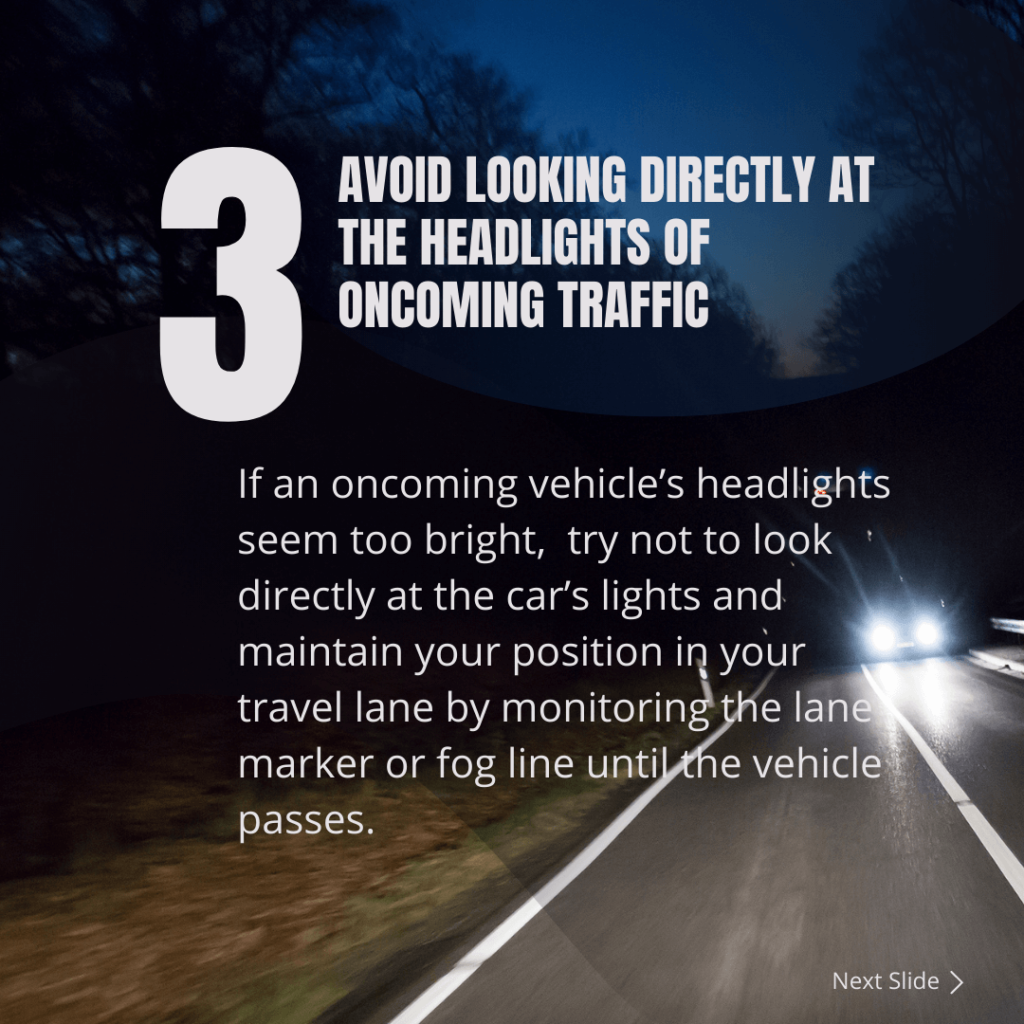
Prepare Your Car
Keeping your car in good shape overall is important no matter what time of day you’re driving. At night, it’s important to keep these points in mind:
- Turn off all interior lights and dim your dashboard. Any source of light inside the car will make it more difficult to see outside.
- Clean the windshield, as well as all other windows, to eliminate streaks. Dirt, streaks or fog on the windshield can cause glare and reduce your visibility. Check your windshield wipers regularly, and replace them as necessary.
- Thoroughly clean headlights, taillights, and signal lights.
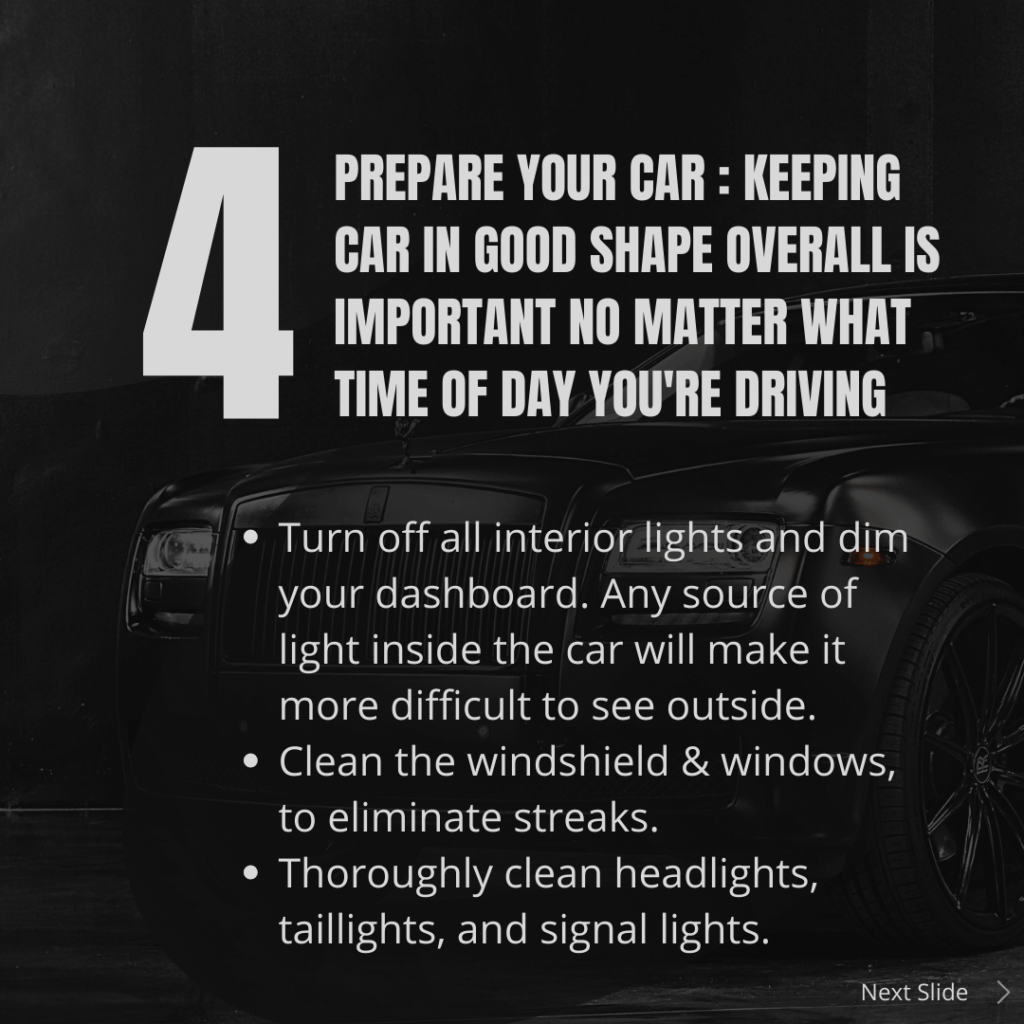
Take Your Time
Allow your eyes a chance to adjust to the darkness before you start driving. It takes a few minutes for the pupils to fully dilate, allowing for maximum light to enter the eye. The more light enters the the pupil of the eye, the better your vision will be.
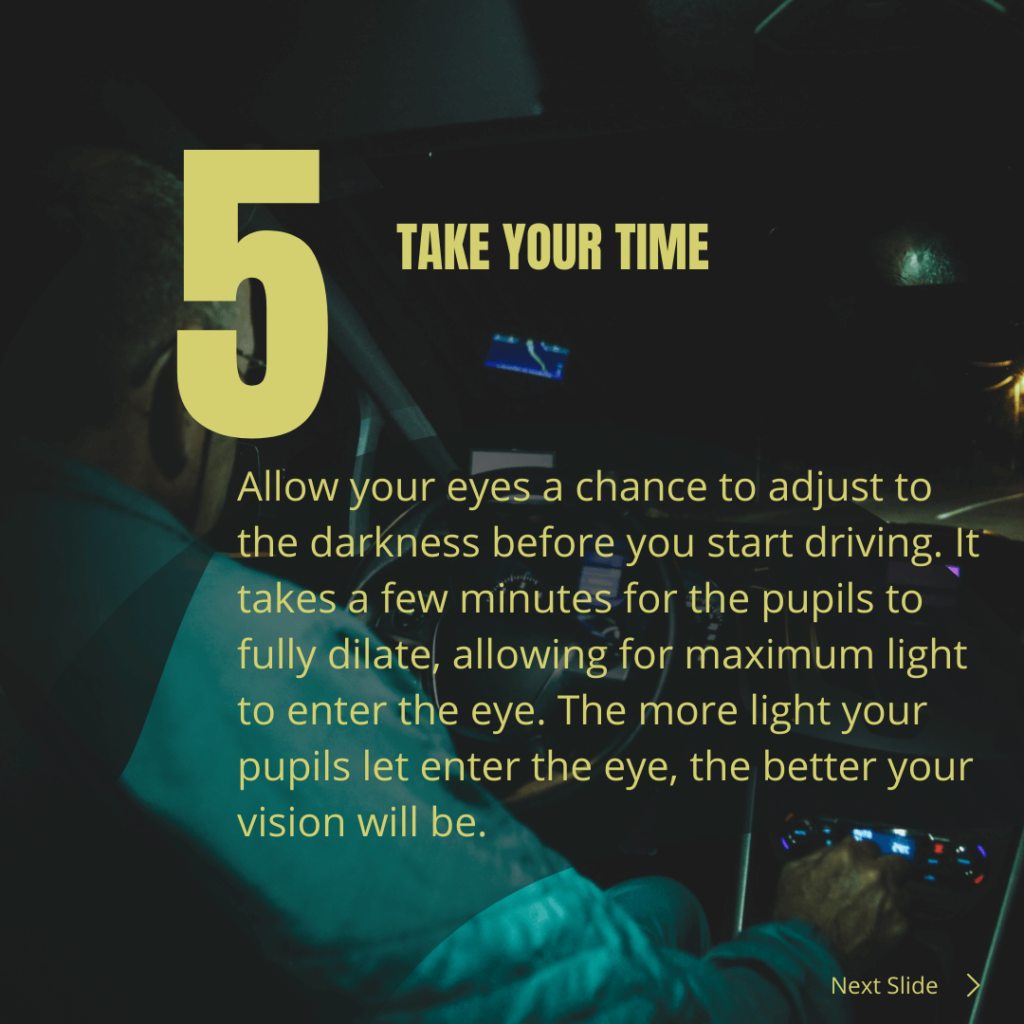
The Importance of Regular Eye Checkups
It is highly recommended to visit your doctor for an eye exam every year. But if you have an eye condition that needs to be monitored or if you are experiencing trouble with your eyes or vision, your doctor may need to see you more frequently. If you are unsure, it’s best to talk to your eye specialist so that you can get personalized recommendations.
Patients who have recently had laser refractive surgery can experience glare and halos for some time after the surgery.
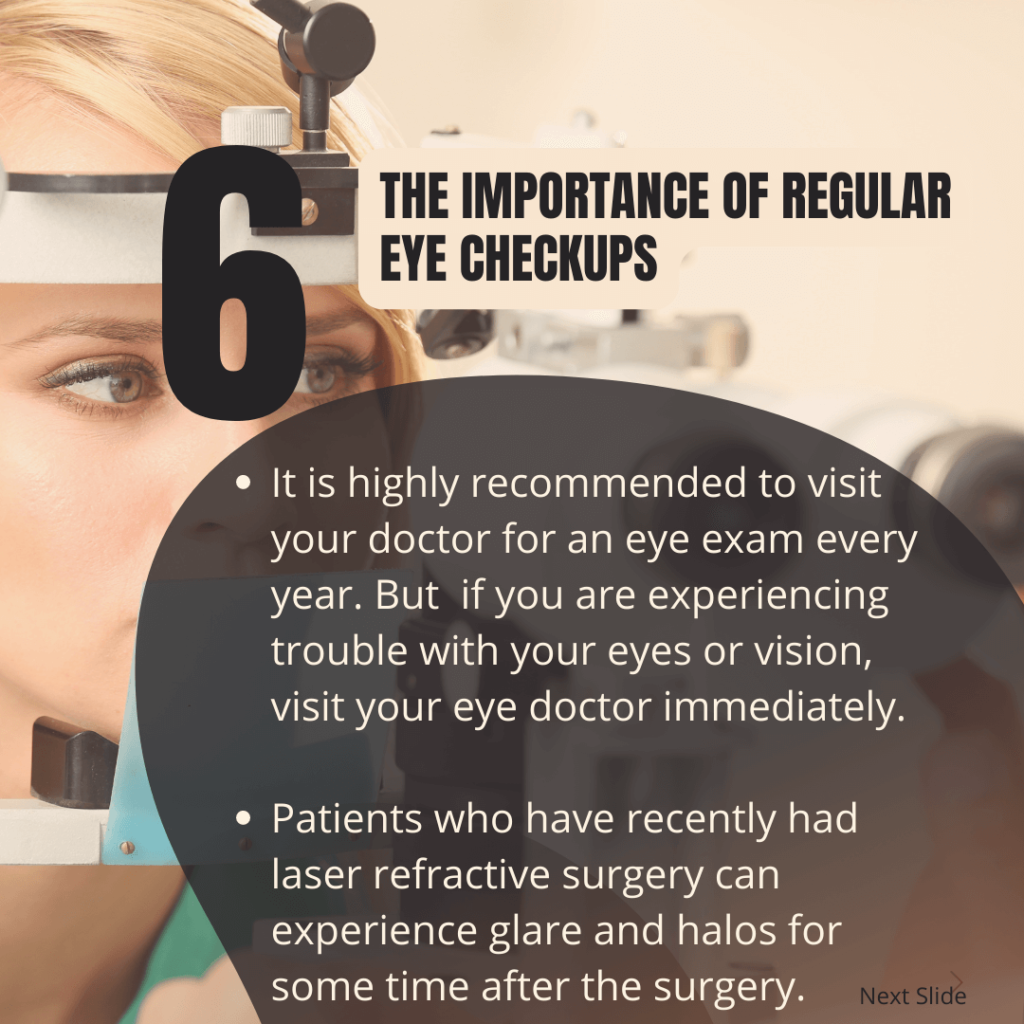
Remove Cataracts
Cataracts develop gradually and usually start to affect your vision around age 60. When you have both cataracts and astigmatism, it doubles your trouble driving at night.Cataract surgery removes cloudy lenses, replacing them with clear, artificial ones. This procedure improves your overall vision, including at night. Talk to your ophthalmologist if you have cataract symptoms such as:
- Blurry vision.
- Light sensitivity.
- Poor night vision.
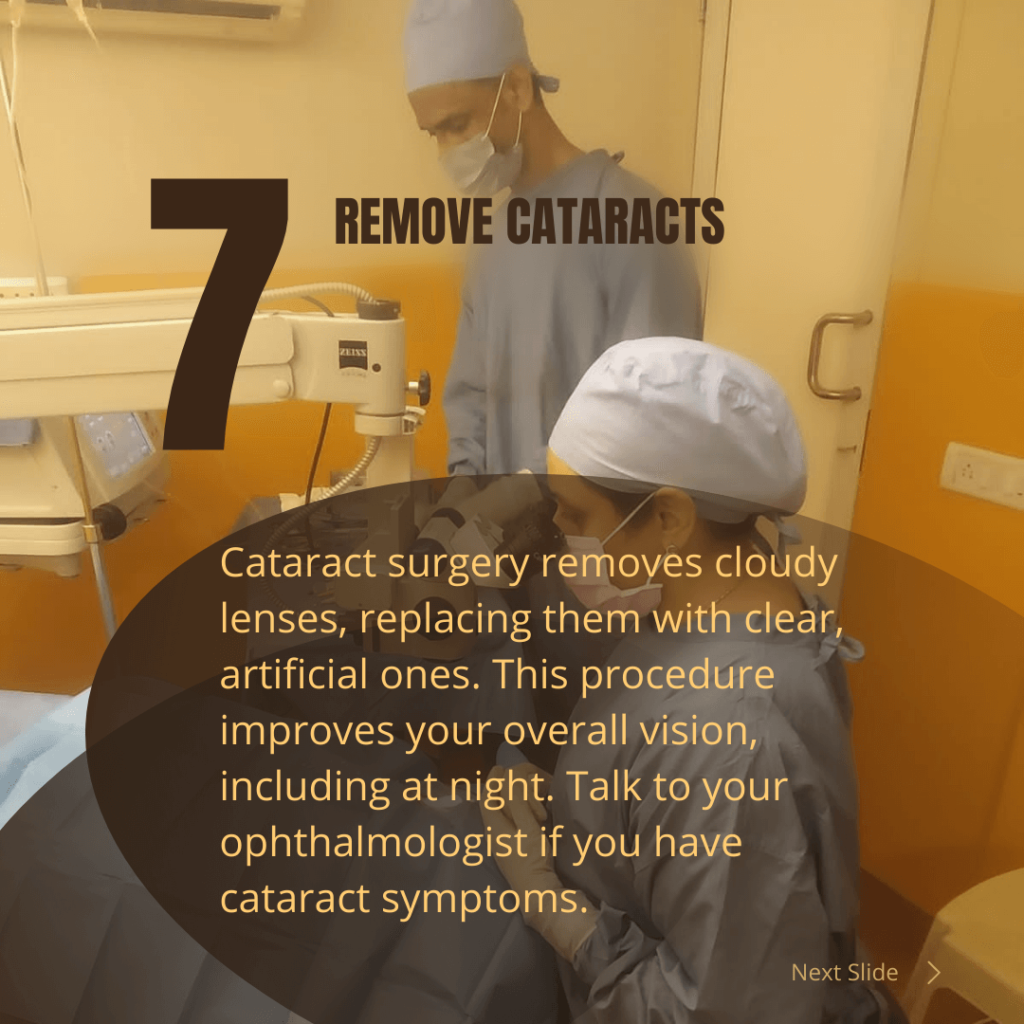
Don’t forget to blink
Sometimes increased concentration while driving can cause you to reduce your blink rate, which could then lead to or exacerbate dry eye symptoms.
Aim dashboard air vents away from the face and eyes to avoid excessive drying of the eyes.
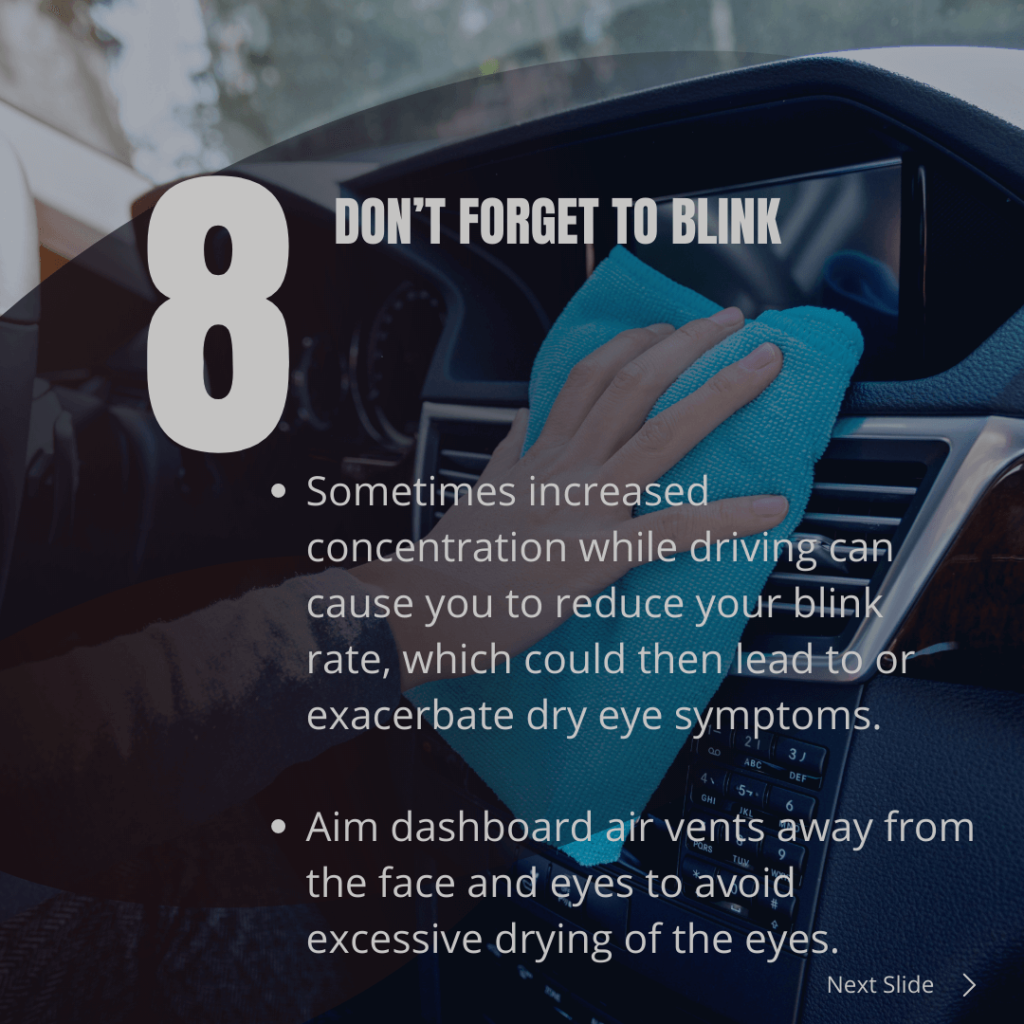
Invest in anti-glare night driving lenses for your glasses.
These no-glare lenses will make your lenses more clear, allowing you to drive more comfortably at night. Some may also have an anti-reflective coating.
Stay Alert and Well-Rested
Signs that you’re getting tired and may be at risk of falling asleep include:
- Yawning or blinking frequently
- Difficulty remembering the past few miles driven
- Missing your exit
- Drifting from your lane
- Hitting a rumble strip on the side of the road
Tips for remaining alert on the road:
- Get seven or more hours of sleep a night.
- While driving, avoid alcohol and over-the-counter or prescription medications, which can amplify the effects of drowsy driving.
- Drive during your regular hours, avoiding prime sleep times (midnight–6 a.m. and late afternoon).
- If you begin to feel sleepy, drink one or two cups of coffee and take a 20-minute nap in a safe place.
Stick to familiar areas
If you’re uncomfortable driving at night, its better to stick to familiar areas if you must go out in the evening. It’s not worth risking your safety or the safety of others to drive when you can’t see clearly.
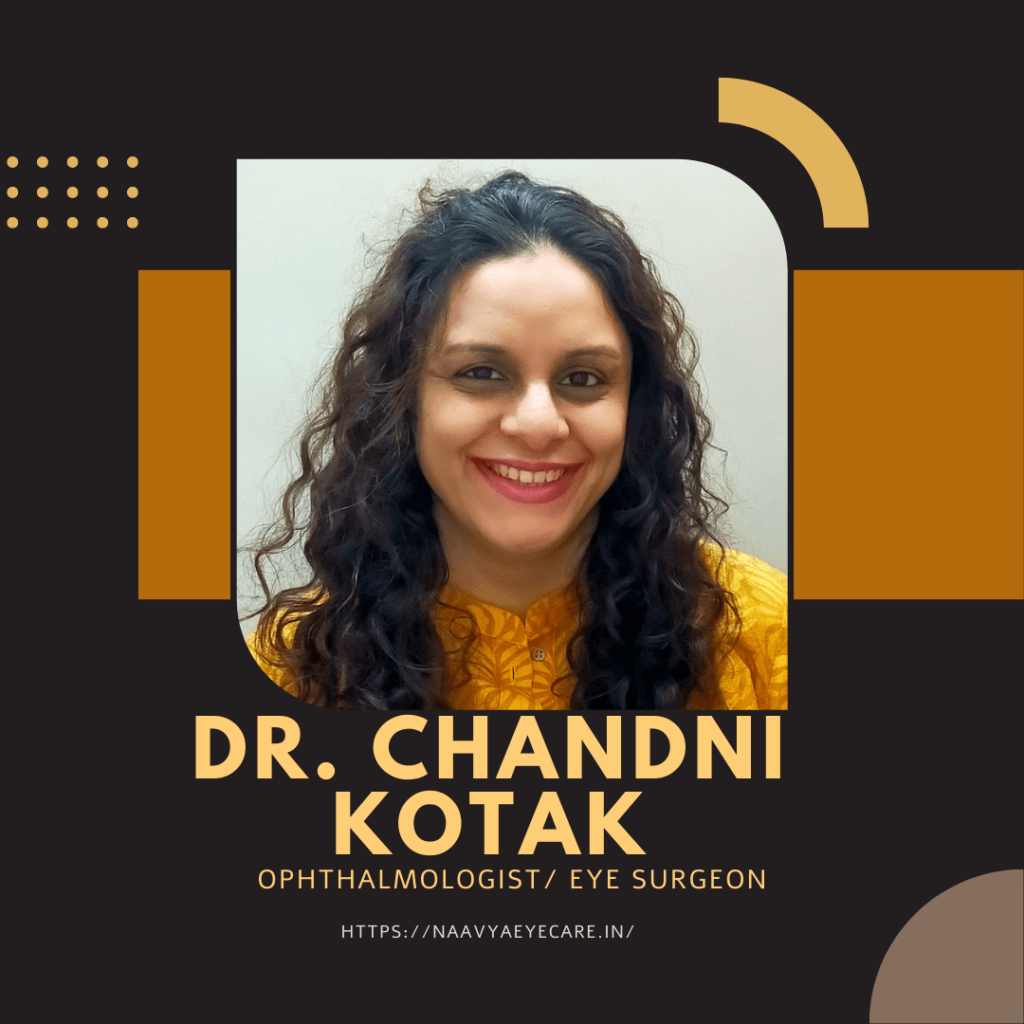
#nightvision #Nyctalopia #nightblindness #Glaucoma #Cataracts #Myopia #nearsightedness #VitaminA #Retinitispigmentosa #Safenightdriving #eyestrain #Cataractsurgery #LASIK #Diabeticretinopathy #cataract #phacoemulsification #cataractstreatment #cataractoperation #lensreplacementsurgery #motiyabind #aftercataractsurgery #lasercataractsurgery #cataractremoval #eyedoctor #southmumbai #besteyespecialist #LASIKsurgeon #glaucomaspecialist #drchandnikotak #besteyedoctormumbai
Dr Chandni Kotak
Naavya Eye Care
Simla House, E block, G – 74, Nepeansea Road, Malabar Hill, Mumbai, Maharashtra, 400036
Contact: 07977998962

